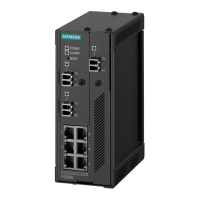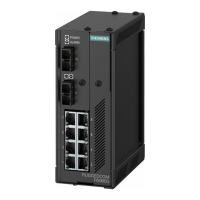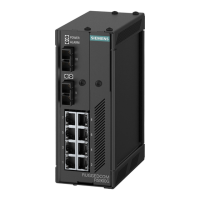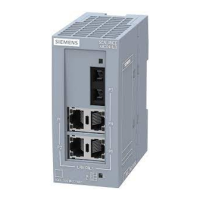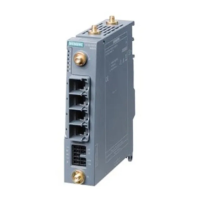RUGGEDCOM NETCONF
Reference Guide
Chapter 7
Examples
79
NETCONF Example Example demonstrates these techniques:
Section7.50, “Removing a CRL File” Removing a CRL file from the device.
CONTENTS
• Section7.1, “Getting the System Name”
• Section7.2, “Getting the ROX Release”
• Section7.3, “Getting the Chassis Status”
• Section7.4, “Setting the System Clock”
• Section7.5, “Acknowledging Alarms”
• Section7.6, “Clearing All Alarms”
• Section7.7, “Viewing Alarms”
• Section7.8, “Restoring Factory Defaults”
• Section7.9, “Changing the System Name by Locking and Committing”
• Section7.10, “Changing the System Name Directly”
• Section7.11, “Creating a Static VLAN”
• Section7.12, “Assigning a PVID on a Port”
• Section7.13, “Disabling Spanning Tree on a Specific Port”
• Section7.14, “Configuring an IP Address on a Specific Port”
• Section7.15, “Deleting an IP Address”
• Section7.16, “Setting a Static Route”
• Section7.17, “Disabling Spanning Tree Globally”
• Section7.18, “Retrieving all IP Addresses from the Running Configuration”
• Section7.19, “Retrieving the Active Routes on a Device”
• Section7.20, “Configuring Static Multicast Routing on a Layer 3 Device”
• Section7.21, “Enabling Static Multicast Routing on a Layer 3 Device”
• Section7.22, “Retrieving Static Multicast Status on a Layer 3 Device”
• Section7.23, “Replacing an IP Address”
• Section7.24, “Configuring a Port to Dynamically Obtain an IP Address”
• Section7.25, “Configuring OSPF Area and Network on a Layer 3 Device”
• Section7.26, “Enabling the OSPF Passive-Default Option”
• Section7.27, “Configure an OSPF Non-Passive Port”
• Section7.28, “Configuring OSPF Parameters”
• Section7.29, “Enabling the OSPF redistribute-connected Option”
• Section7.30, “Enabling OSPF on a Layer 3 Device”
• Section7.31, “Retrieving OSPF Status”
• Section7.32, “Retrieving All Data from the Routing Namespace”
• Section7.33, “Configuring DHCP Server”
• Section7.34, “Configure the DHCP Server Port Listening for DHCP Client Requests”
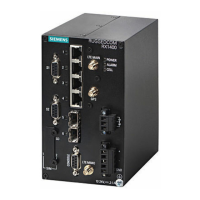
